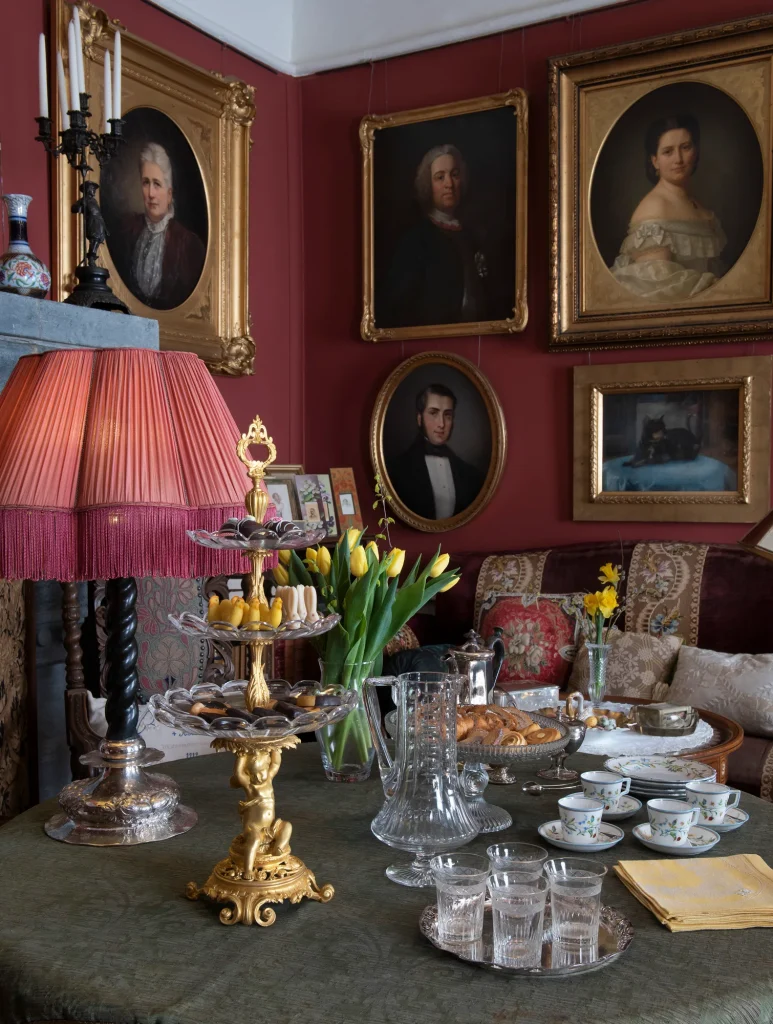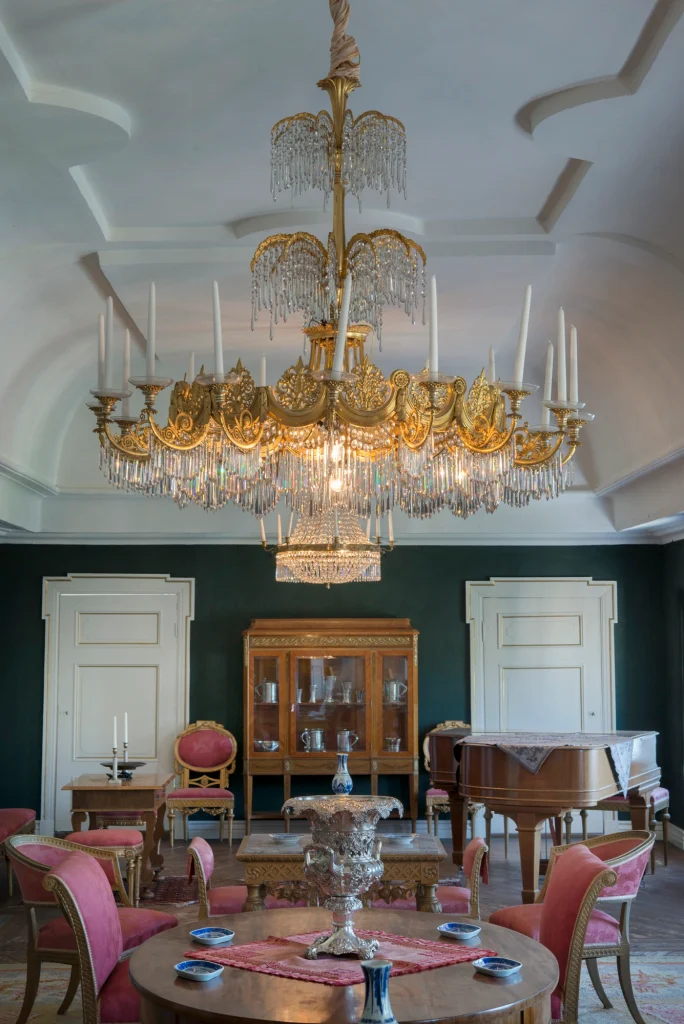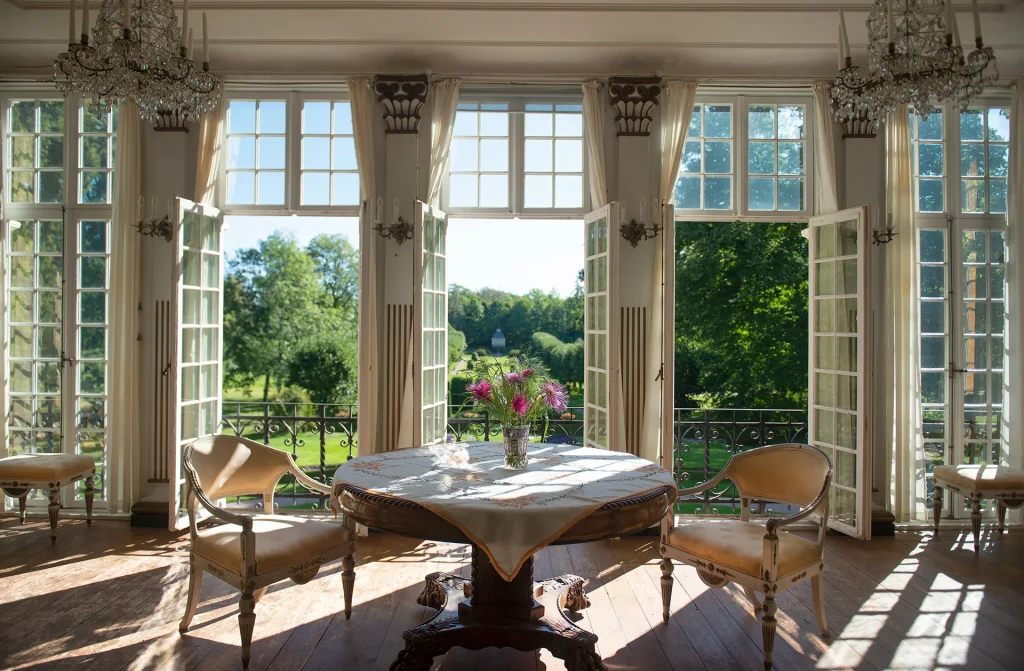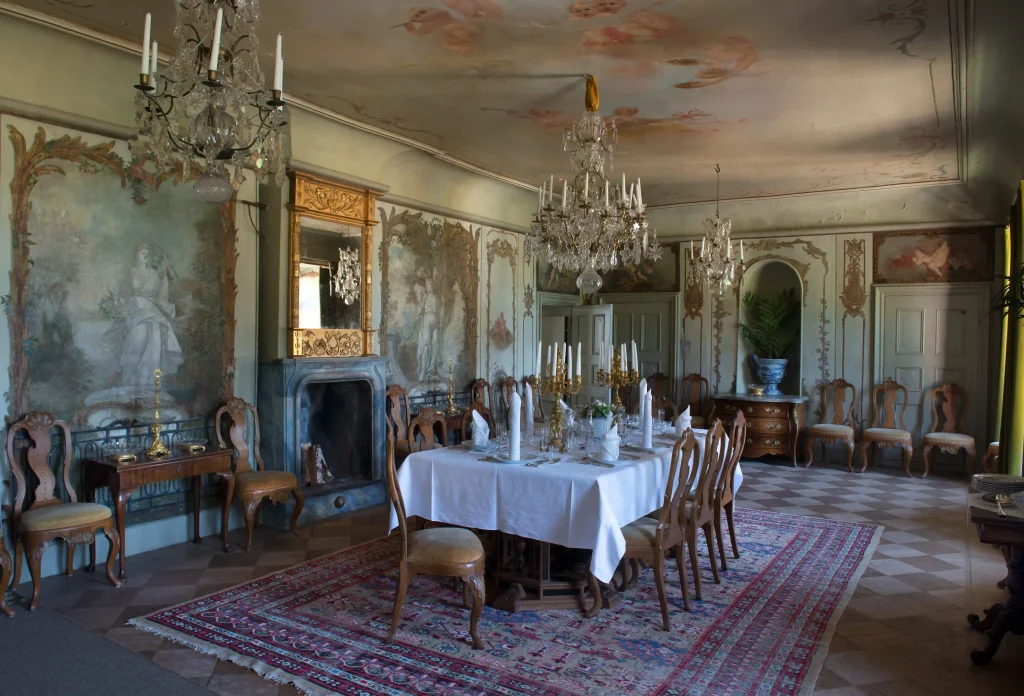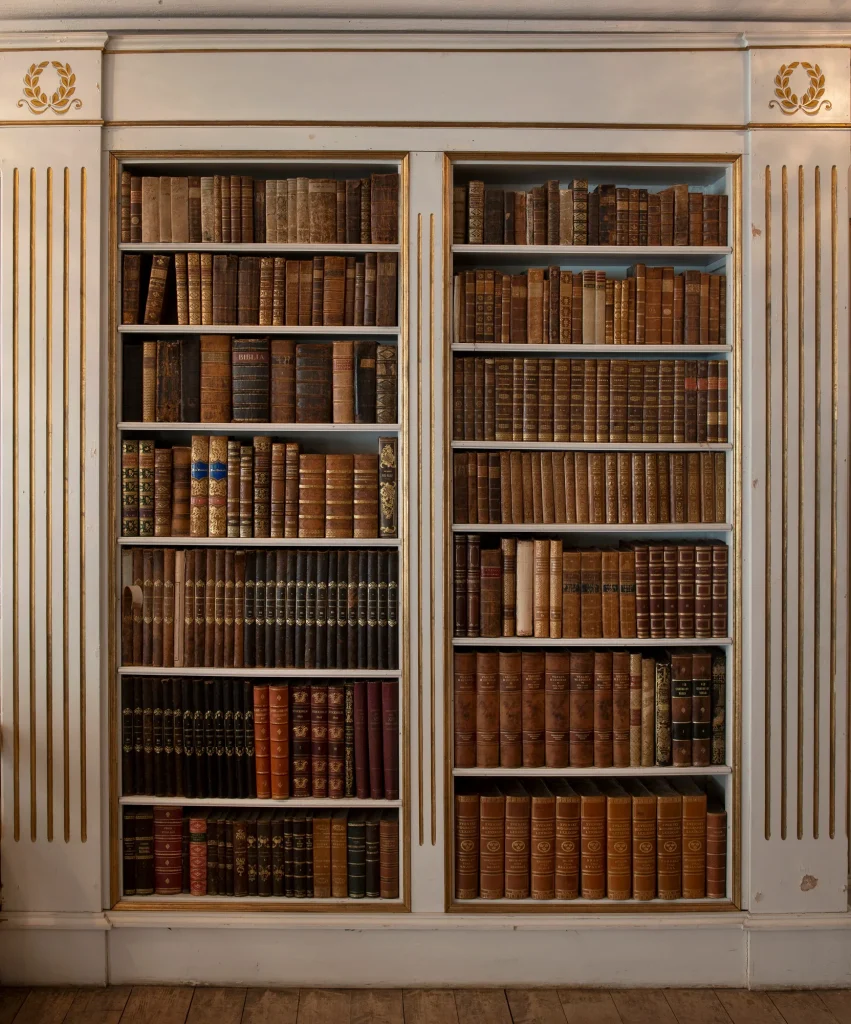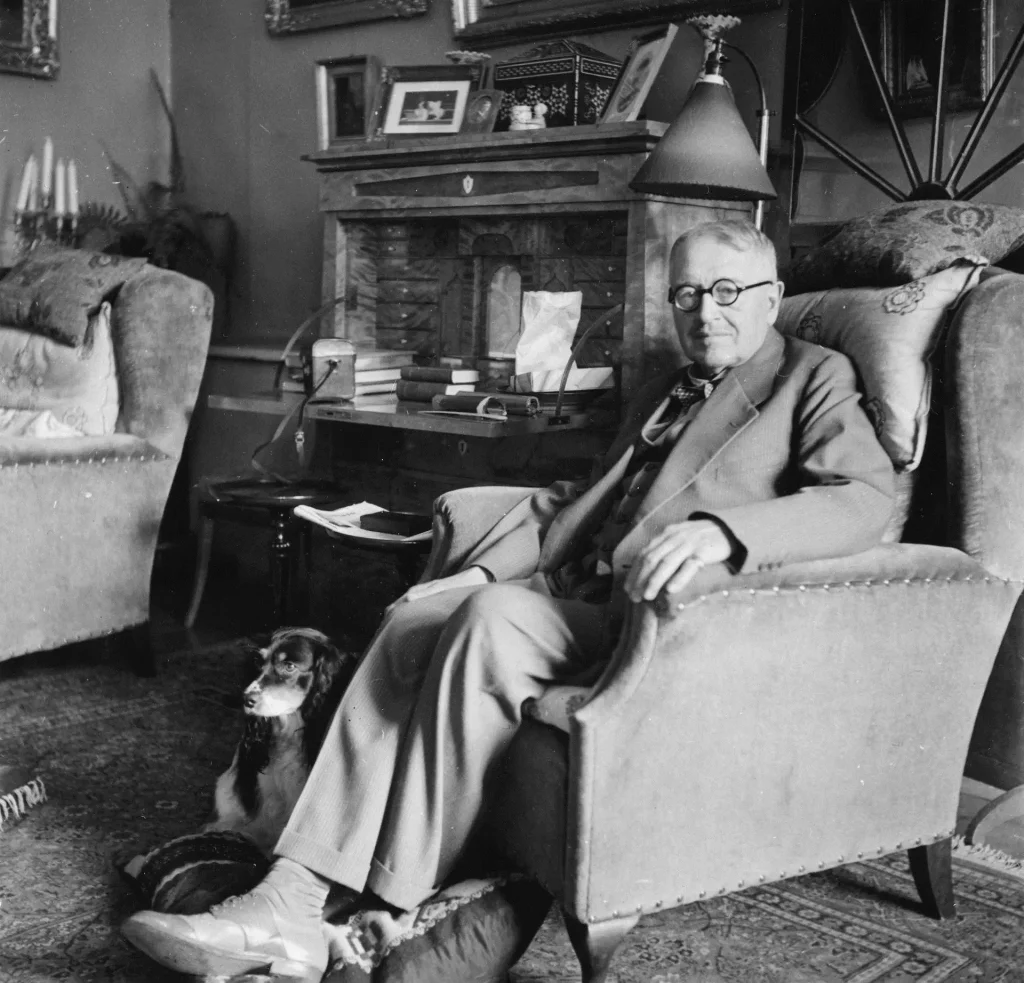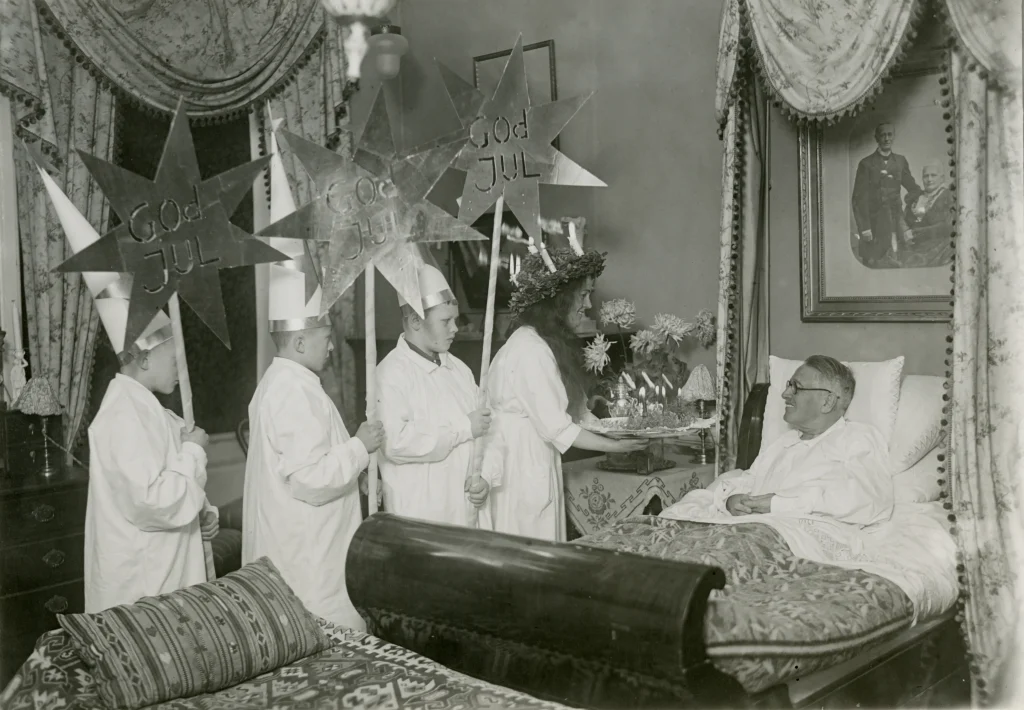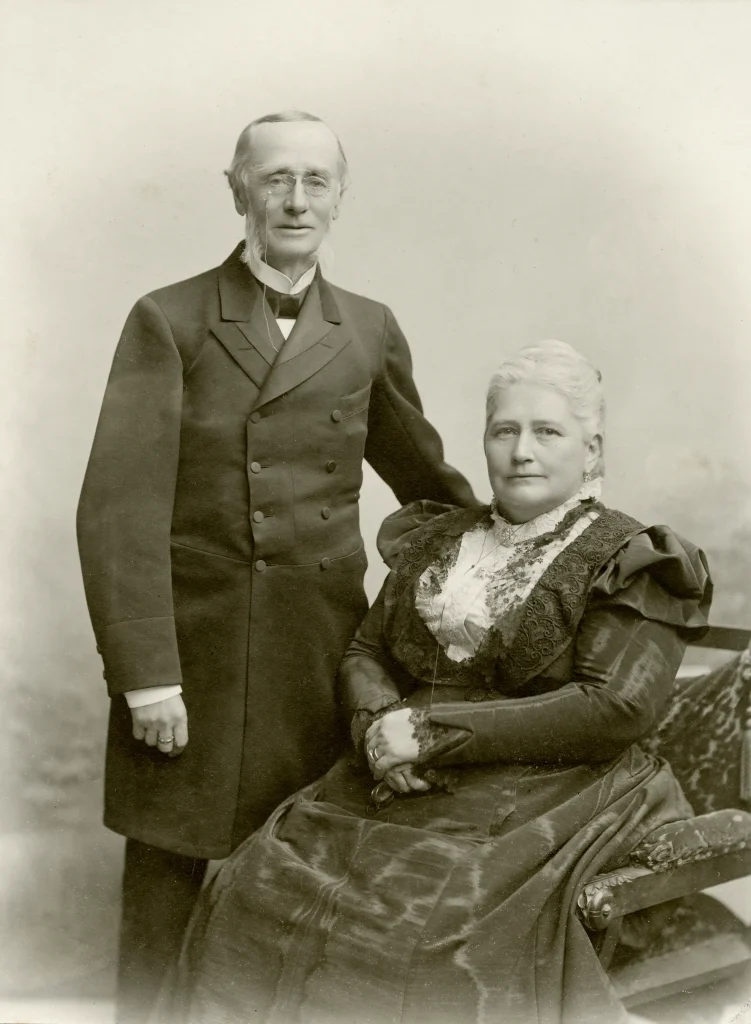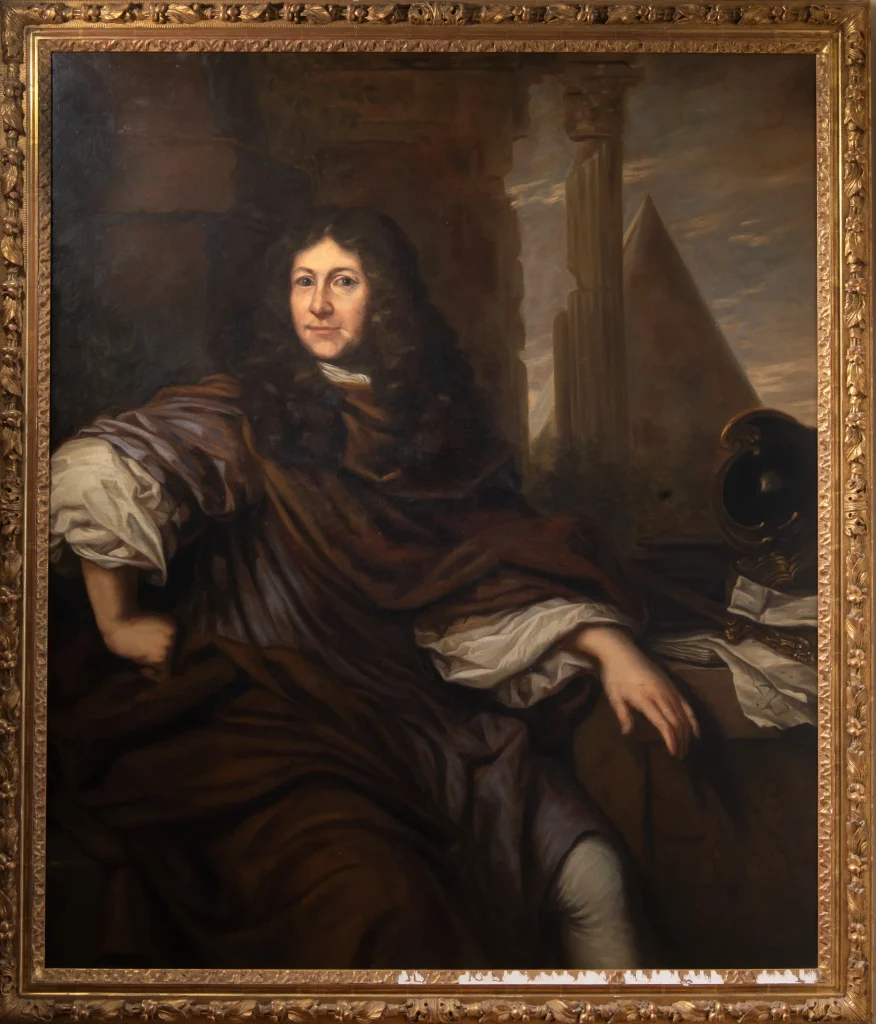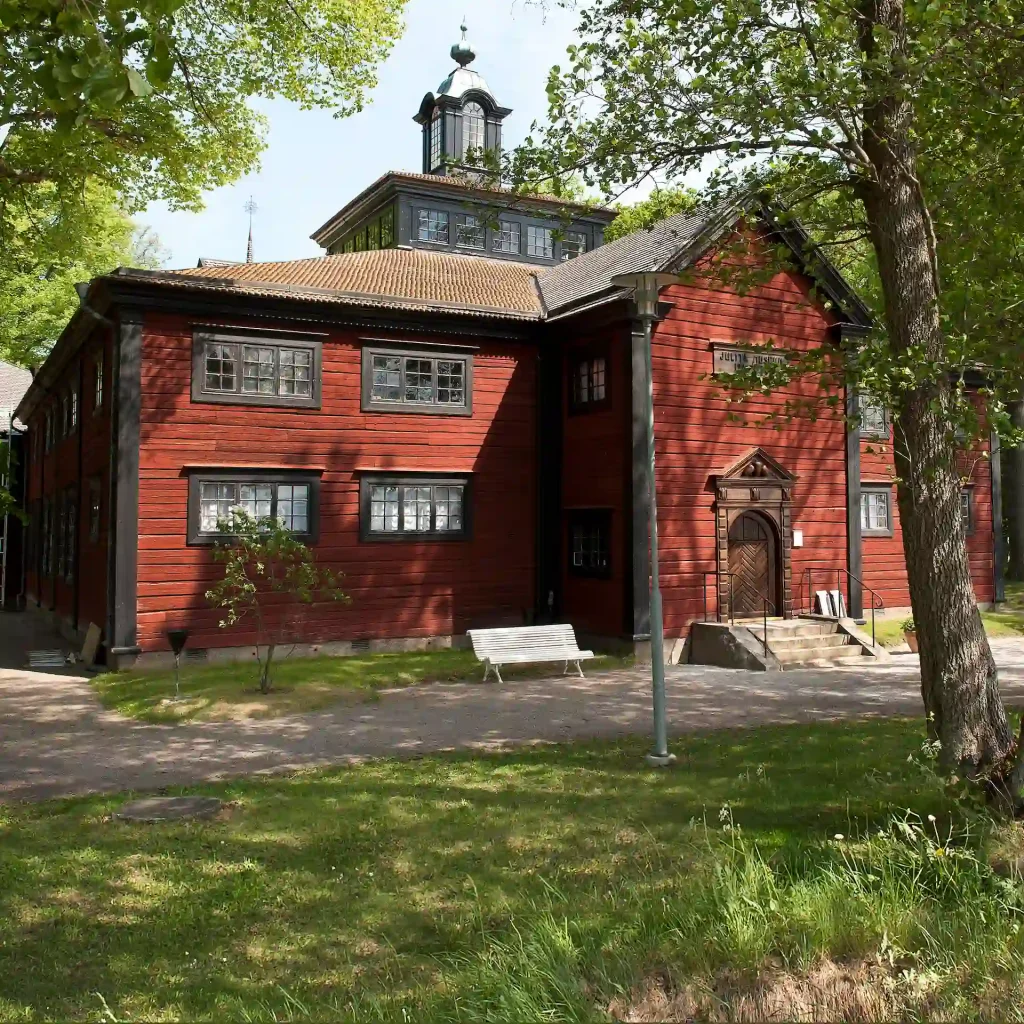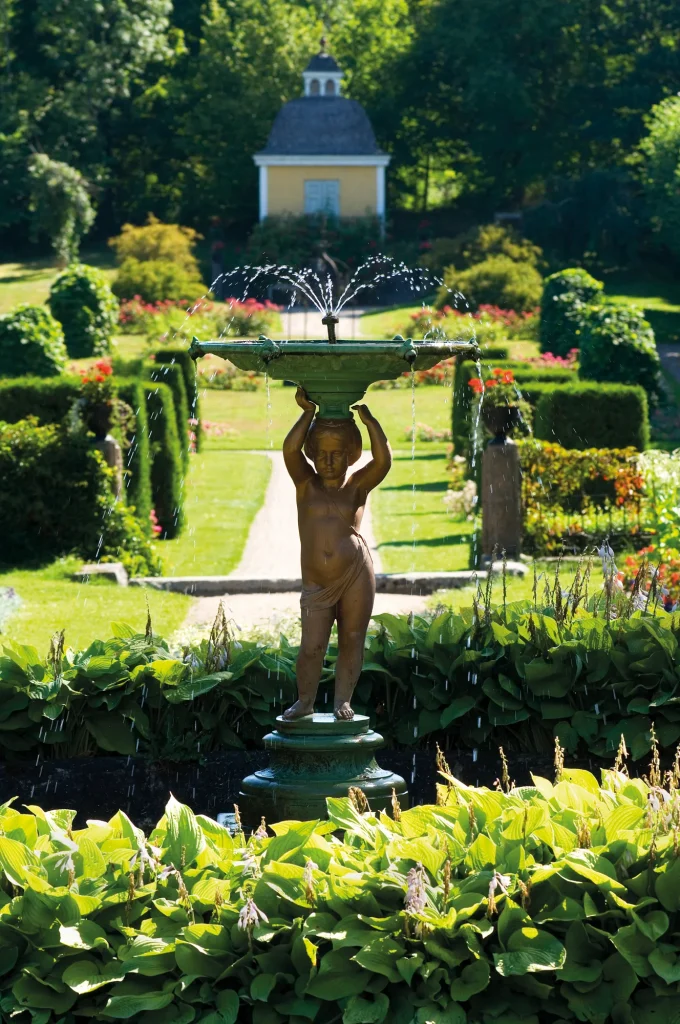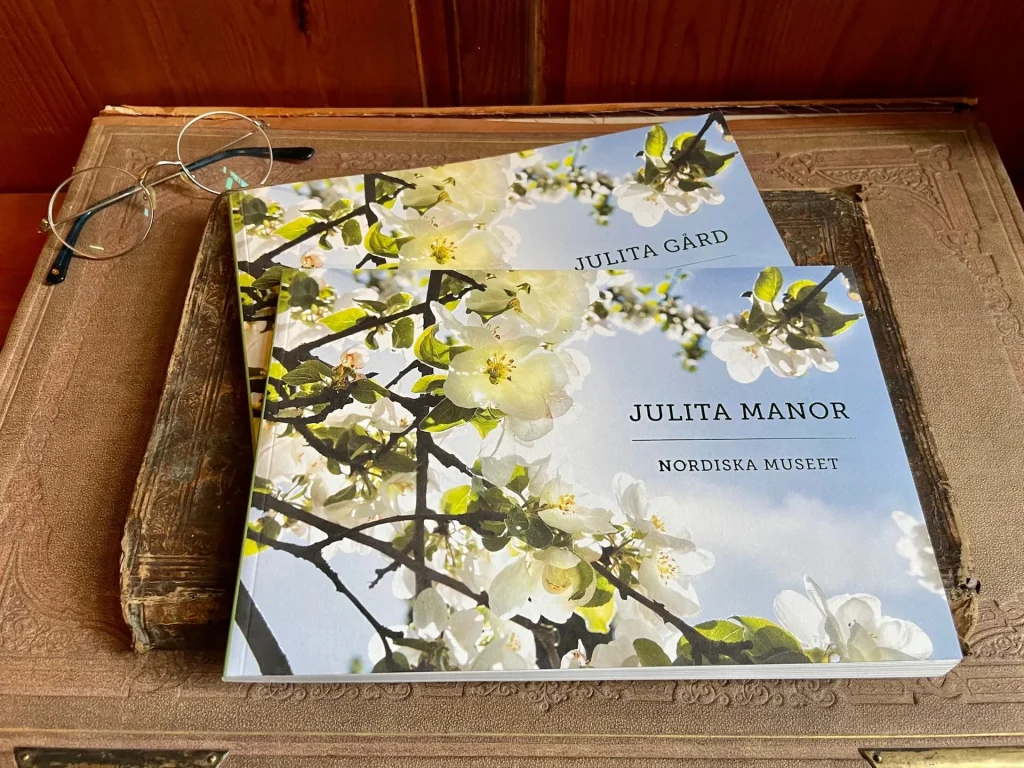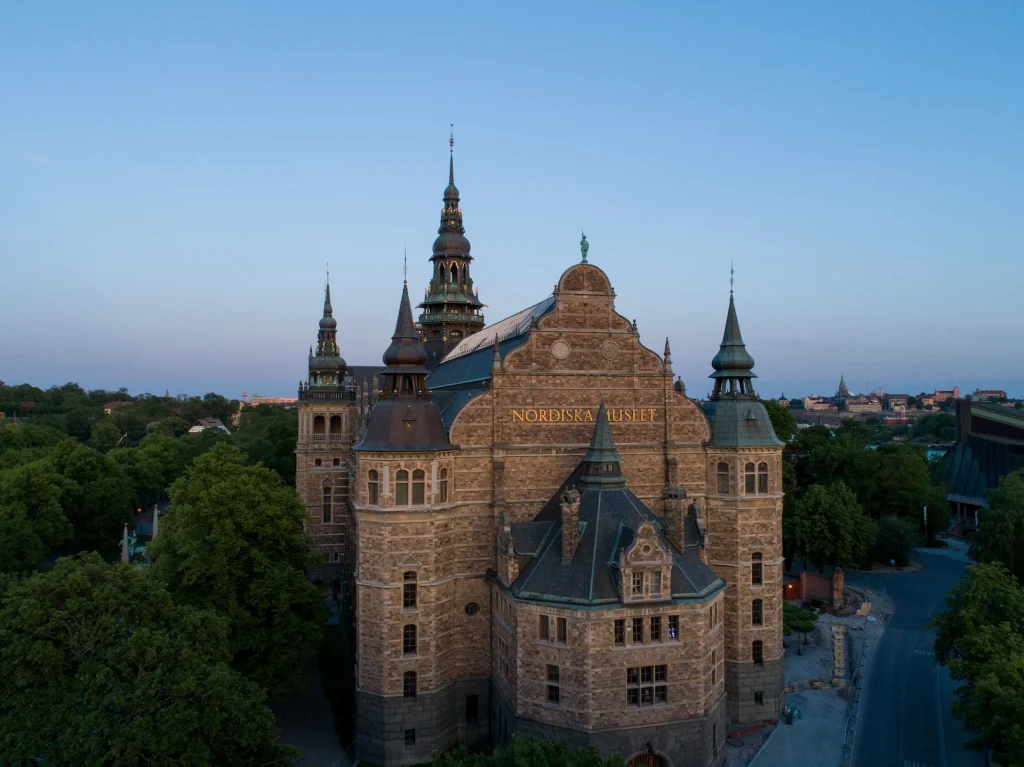The last owner of Julita Manor
Julita Manor and Gardens is an historical estate in Sörmland, a short journey from Stockholm. It is preserved to reflect its appearance and function in the early 1900s when the last private owner, Arthur Bäckström lived here. What was life like at a Swedish manor at the time?
The room still carries the scent of yesterday’s tobacco smoke. A faint hint of cognac and aftershave lingers. The desk feels familiar under his palms as he settles in. One of the dogs nestles comfortably at his feet, a warm chin resting on his foot. He gazes out towards the calm waters of lake Öljaren. Taking up the pen, it’s time to finally document what he has long decided for his beloved Julita.

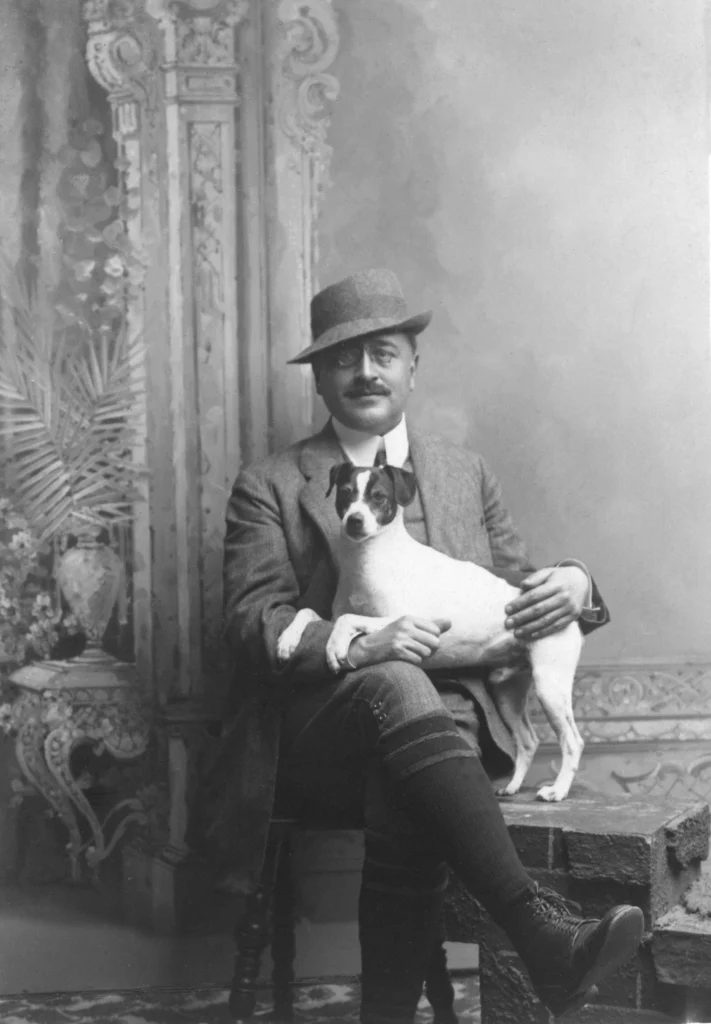
A Culturally Inclined Lieutenant Moves In
Arthur Bäckström, who lived from 1861 to 1941, was the last private owner of Julita Manor. He served in the Sörmland Regiment and held the rank of lieutenant when he retired from the army in 1906.
Since 1892, he had been leasing Julita Manor from his father, Johan Bäckström, whose company W:m Hellgren & Co purchased the estate in 1877. Ten years later, he inherited the estate. “The Lieutenant,” as employees, friends, and acquaintances called him, would live at Julita for nearly 40 more years.
Private photographs, letters, and diaries, which accompanied Arthur Bäckström’s donation of Julita Manor to Swedish museum Nordiska museet in 1941, paint a picture of a life filled with guests, companion dogs, parties, and antics. But also solitude. The diaries and correspondence reveal both deep seriousness and levity, reflecting a person of great passion, creativity, and initiative.

Leaving His Mark on an Estate with a Long History
Julita Manor had served as both a royal estate and an ironworks before becoming a noble estate. When Arthur Bäckström became the owner of the manor he had been leasing for ten years, he made significant changes, both interior and exterior.
He erected two new wings, the carriage wing and the stable wing. He allowed the park to flourish with a gazebo, a greenhouse, and an orangery. Additionally, he also built a large retirement home in Nybble for the estate’s employees.
But it was in the Main House where he himself lived, and even today, you can see his possessions and how his home appeared. Let’s step inside.
Private Life with Correspondence and Work
On the ground floor are the servant’s quarters and the warm-keeping kitchen. In the cloakroom, guests brushed off the travel dust. And then there was “The Red Room,” the smoking room. After a fine dinner, the lieutenant and his gentlemen guests would often retire here to freely discuss money and politics. This was the lieutenant’s private living room when he had no visitors.
Closeby is the writing room for correspondence and his private bedroom with a bathroom, as well as a small dining room where he had breakfast at nine with toast, eggs, coffee, and buns. Often, the estate manager would visit to report on the morning’s inspection of the estate.
Social Life with Parties and Dinners
On the second floor are the grand apartment and the social suite with a dining room and parlours for socializing.
Here is an enclosed summer dining room and a balcony room. It was built during Arthur Bäckström’s time and is a place for more relaxed socializing with a view of the rose garden and the gazebo.
The dining room, guest room, and parlours are inspired by the rococo and Gustavian styles of the 18th century, with beautiful textiles and original wall paintings.
In the dining room, one could set the table for up to 30 guests. The food was locally sourced – either from the estate or from the estate’s fishing waters and hunting grounds.
When Bäckström moved in, he converted the attic on the third floor into a gallery, ballroom, and music room for the grandest parties. On his 80th birthday, the long table was set for 64 guests.
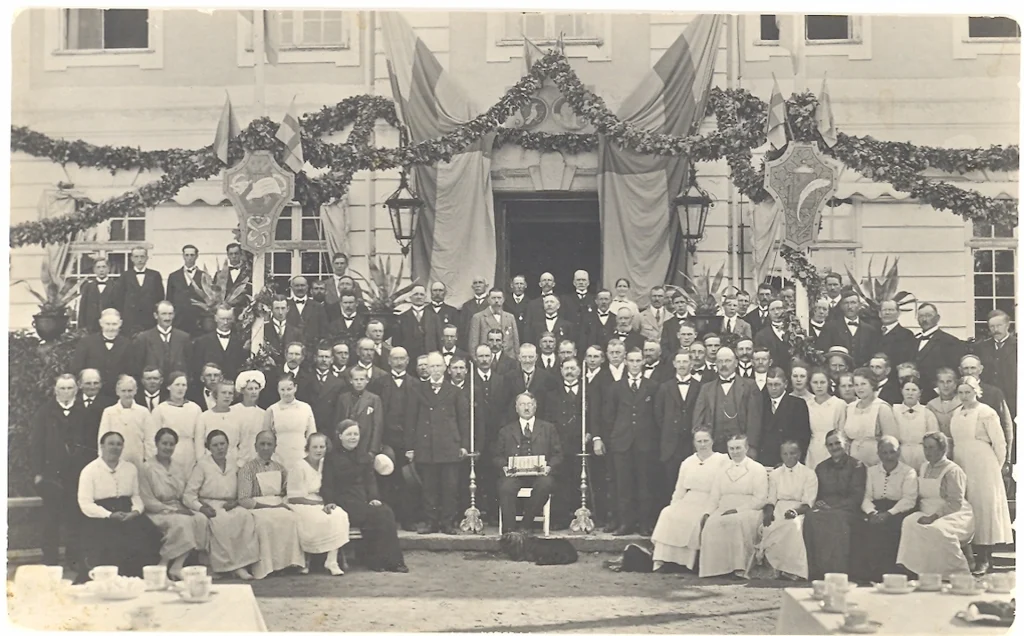
Art, Culture, and Reading
On the top floor are the gallery, guest rooms, and a library with a reading room. It is still adorned with custom-built inlaid decorated bookshelves, silk-clad walls, and decorated pilasters.
The library collection consists of 5000 volumes of books, ranging from travelogues, fiction, art, and history to the collected works of Ibsen and Shakespeare. The library reflects Arthur Bäckström’s great interest in art and cultural history.
Inspired by Hazelius and Skansen
Arthur Bäckström was also strongly influenced by the late 19th-century national romantic ideas and greatly inspired by his mother’s friend, Artur Hazelius, the founder of Nordiska museet and the open-air museum Skansen in Stockholm.
In the same national romantic spirit as Hazelius, Arthur Bäckström began early on to collect objects and had buildings moved from the area to Julita.
The collections of objects soon became very extensive. In 1930, a museum was completed in the manor park. The cottages and the museum became Julita’s own tribute to Skansen in Stockholm and are therefore called Julita Skans.
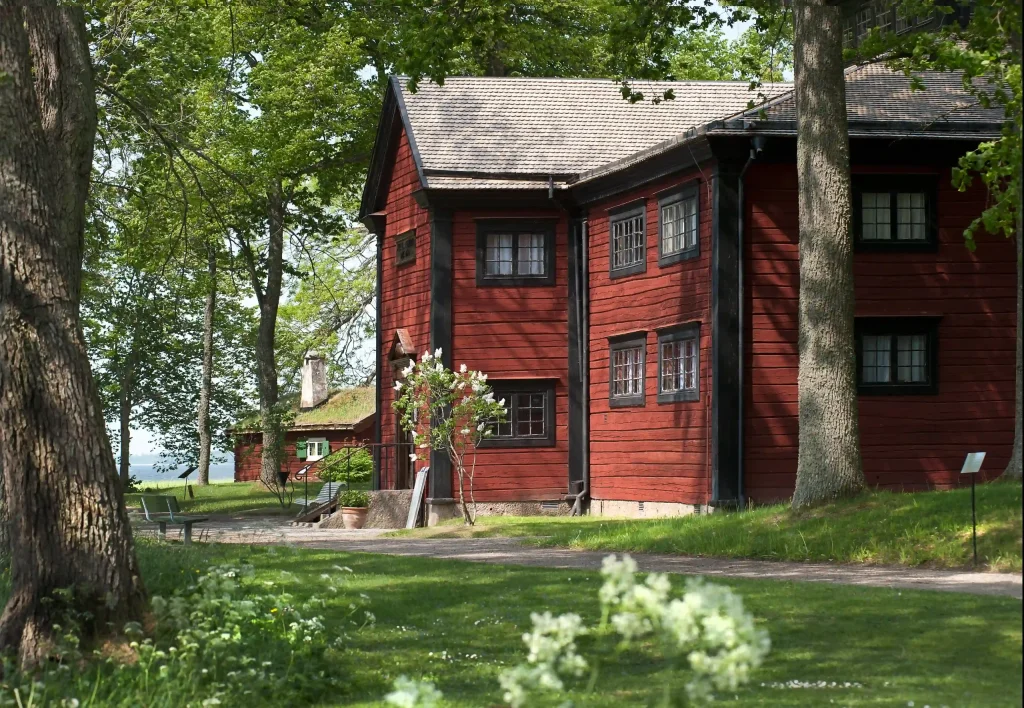
Arthur Bäckström never married and had no children. Already in the 1920s, he had decided that it was to the Nordic Museum he would bequeath his Julita.
… to provide future generations with a faithful picture of how a significant estate in Sörmland appeared at the end of the last and the beginning of the current century.
Arthur Bäckström in his will regarding the donation of Julita Manor to Nordiska museet
A vital and important social mission
Already towards the end of the 1920s, Bäckström decided to donate Julita Manor to Hazelius’s Nordiska museet, but it wasn’t until 1931 that the news was announced to the press. Julita Manor and Arthur Bäckström then became nationally known figures. In the will it states:
“The main building with wings and farm buildings along with adjacent areas such as the garden and park should, as far as possible, be preserved unchanged to provide future generations with a faithful picture of how a significant estate in Sörmland appeared at the end of the last and the beginning of the current century.”
Nordiska museet took over the estate and lands with forests, water, and agricultural land in 1944. A unique collection of private letters, photographs, and diaries accompanied the donation.
The donation of Julita Manor is the largest to the museum ever. It is a vital and important mission to make the estate accessible to visitors and to sustain the unique cultural-historical environment in a sustainable manner for the future, especially from climate and sustainability perspectives.
